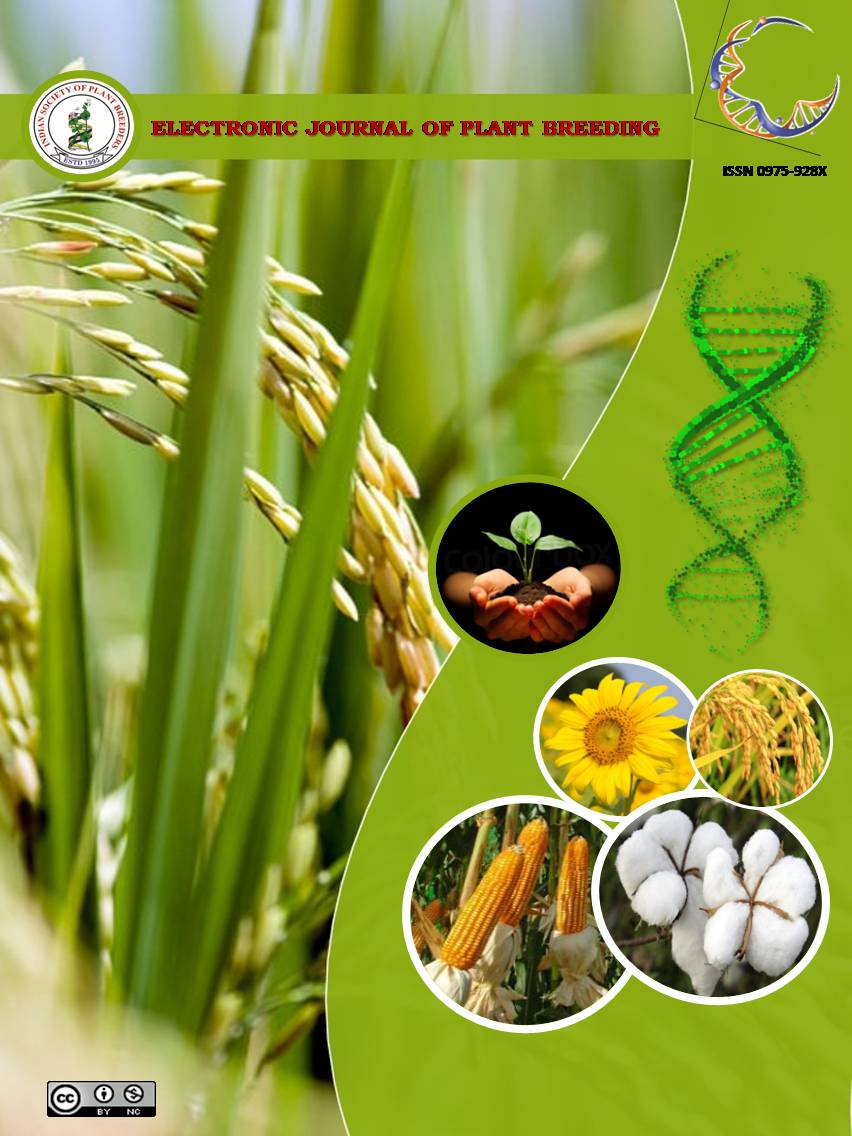Correlation and path analysis studies in hybrids of Line x Tester for yield and yield component traits in sesame (Sesamum indicum L .)
Abstract
The experimental material comprised of 12 sesame genotypes of six lines (black/brown seed) and six testers (white seed). Crosses were made in ̔ Line x Tester ̕ fashion and thirty six hybrids were developed. The 36 F1s along with parents were utilized for this study to assess the relationship and effects between yield and its components traits. Biometrical data were recorded on twelve characters viz., days to fifty percent flowering, plant height, number of branches per plant, number of capsules on main stem, number of capsule per plant, capsule length, number of seeds per capsule, height of first node from base, height of first capsule, thousand seed weight, single plant yield and oil content. Correlation analysis revealed that there was a positive significant association of seed yield with number of capsule per plant. Path analysis revealed that the trait number of capsule per plant exhibit high positive direct effect on single plant. From this study it was observed that number of capsule per plant made the most contribution to seed yield and should therefore be used as a selection index for sesame improvement.

It is certified that:
- The corresponding author is fully responsible for any disputes arising due to the publication of his/her manuscript.
- The article has been seen by all the authors who are satisfied with its form and content.
- The sequence of names of authors in the by-line is as per their relative contribution to this experiment, giving due credit to all scientists who made notable contribution to it.
- All the authors fully understand that inclusion of any other co-authors or exclusion of any co-authors is not possible once the article has been submitted to the journal.
- The corresponding author takes full responsibility for this article.
- The address of the organization where the research was conducted is given.
- The article is exclusive for this journal, and the results reported here have not been sent (and will not be sent during its consideration by this journal) for publication in any other journal.
- Authors agree to abide by the objective comments of referees and do agree to modify the article into a short note as per the recommendation, for publication in the Electronic Journal of Plant Breeding.
- If published in Electronic Journal of Plant Breeding, the copyright of this article would vest with the Indian Society of Plant Breeders, who will have the right to enter into any agreement with any organization in India or abroad engaged in reprography, photocopying, storage and dissemination of information contained in it, and neither we nor our legal heirs will have any claims on royalty.


